
Canada to Key West in ten days, and for many the ride of a lifetime
Words and Photos by Felicia Morgan
Interactive map design by Kali Kotoski
For most folks, a nice ride typically encompasses a few hundred miles on the cushy seat of a decade-old machine. But for the sixty-nine brave and adventurous souls who signed up for the inaugural 2019 Cross Country Chase, their journey this past September was far from typical – and one many considered the ‘ride of a lifetime.’

The Chase, which ran only on backroads from the U.S./Canada border town of Sault Ste. Marie, Michigan, to Key West, Florida, took in eight states over the span of ten days aboard antique bikes built more than seven decades ago. And it was clear from the beginning this would be a ‘no frills’ sort of run.
On machines manufactured between 1930 and 1948, a trip of this magnitude meant special consideration had to be paid to things like: distance between gas stations; arranging room on the bike for all a rider’s necessities; parts and tools (no personal tagalongs, crews or chase trucks allowed); and, most importantly, where the hell to find huge stores of 60-weight oil!
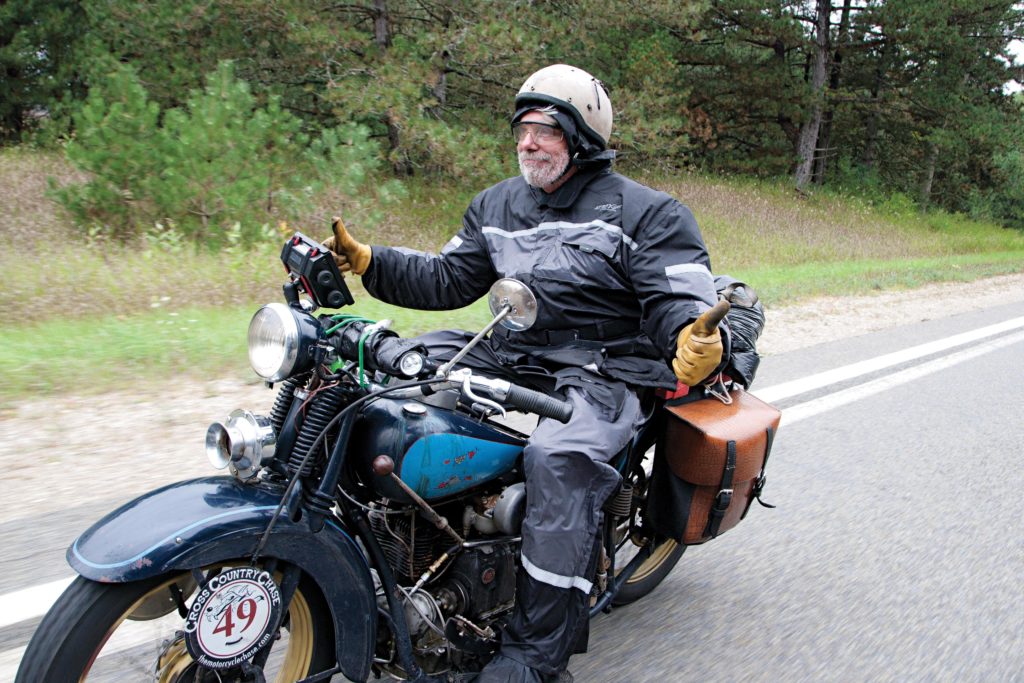
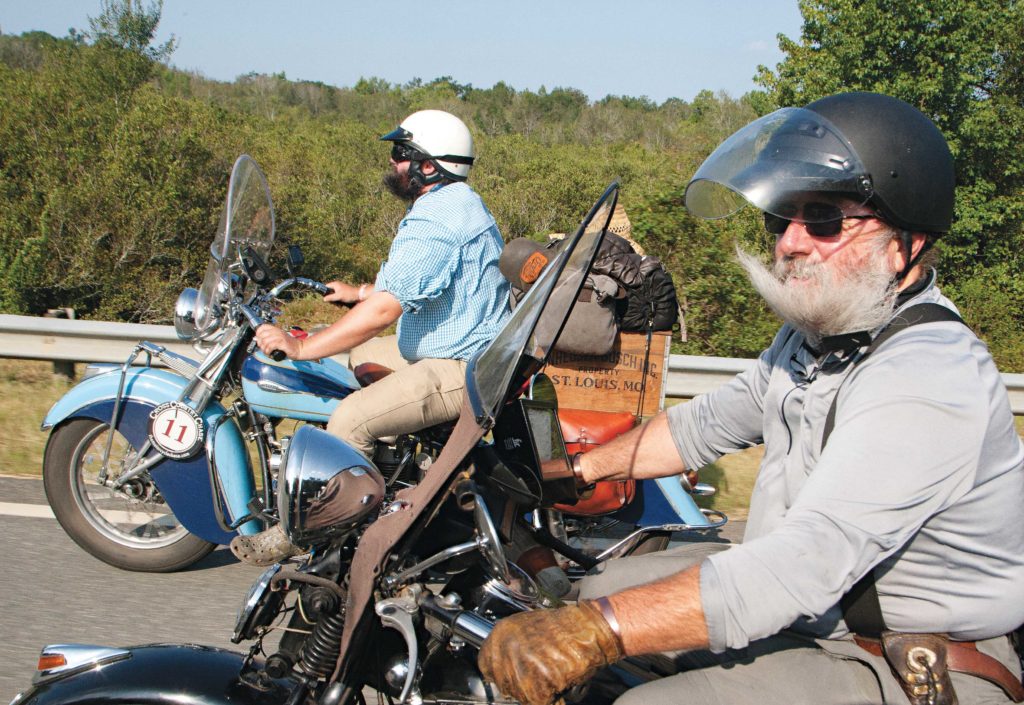
The Cross Country Chase is the newest franchise in American antique motorcycling tours, and as entrants of the inaugural run toed up to the starting line in Sault Ste. Marie, concerned eyes were trained skyward. As a rain-or-shine, Florida-or-bust event, there was no way to avoid whatever Ma Nature would throw at the group, and the old gal did her best to dampen spirits every step of the way. Crappy weather and cold winds threatened to rain out the whole parade from the start, so riders geared up accordingly for much of the entire ten-day ride.
Wet weather plagued the group every day until Stage 5, the halfway point, when 100-degree temps with stifling humidity replaced the rain. If there’s anything old motorcycles hate more than rain, it’s heat, and the riders suffered just as much as their engines. From heat-exhausted riders to seized engines, the searing temperatures in the south took their toll, causing one rider – Rowdy Schneck, everyone’s favorite wild man from New Mexico – to pack it in. After being monitored by Chase nurse Vicki Sanfelipo, Rowdy eventually threw in the towel. His Indian Chief was willing and strong, but the soaring mercury took its toll on Rowdy. The group waved goodbye as they rolled out of Macon, Georgia on the morning of Stage 7, leaving Rowdy at the hotel waiting to be retrieved by family.
Promoters Jason and LeeAnn Sims of Motorcycle Cannonball Endurance Run fame, along with Rick and Vickie Salisbury from Legends Motorcycle Emporium in Utah, were with the riders for the entire route. The Sims, with help from route master John Classen, dealt with the mechanics of the run, including designing the difficult and somewhat complex scoring system that included certain handicaps. Some modifications were allowed on the bikes, such as updated headlamps, brakes and fuel capacity. The addition of a speedometer/odometer (GPS is not allowed) in order to maintain accurate mileage was allowed since the route sheets handed out before each morning’s ride were fairly complicated and very detailed. One missed turn could ruin the whole day and knock a rider out of the scoring if he or she came in late.
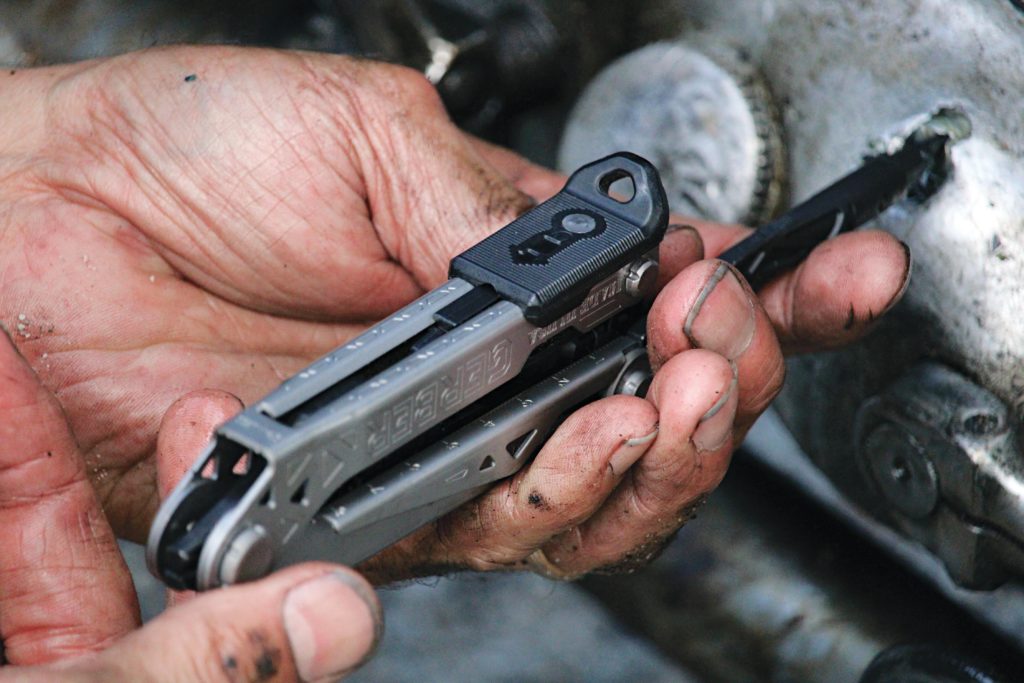

There are three classifications for Chase bikes. Class I motorcycles had the smallest engines (500cc or less, must be able to maintain 45mph on a flat road) and, if successful at getting all the miles, were the most likely to win the competition. Class II motorcycles have displacements of 501cc to 1000cc and can maintain 50 mph on a straight flat road, while Class III motorcycles have displacements over 1001cc and can maintain 55 mph on a straight flat road.
In addition to mileage scores, a daily quiz was given at an undisclosed checkpoint along the route, and as expected, riders hated the test. These were 10-point multiple-choice tests based on motorcycle history and landscape details taken from the prior day’s ride, so a sharp memory was important. Test scores added another dimension to the run, but it was clearly the most unpopular part of each day’s events.
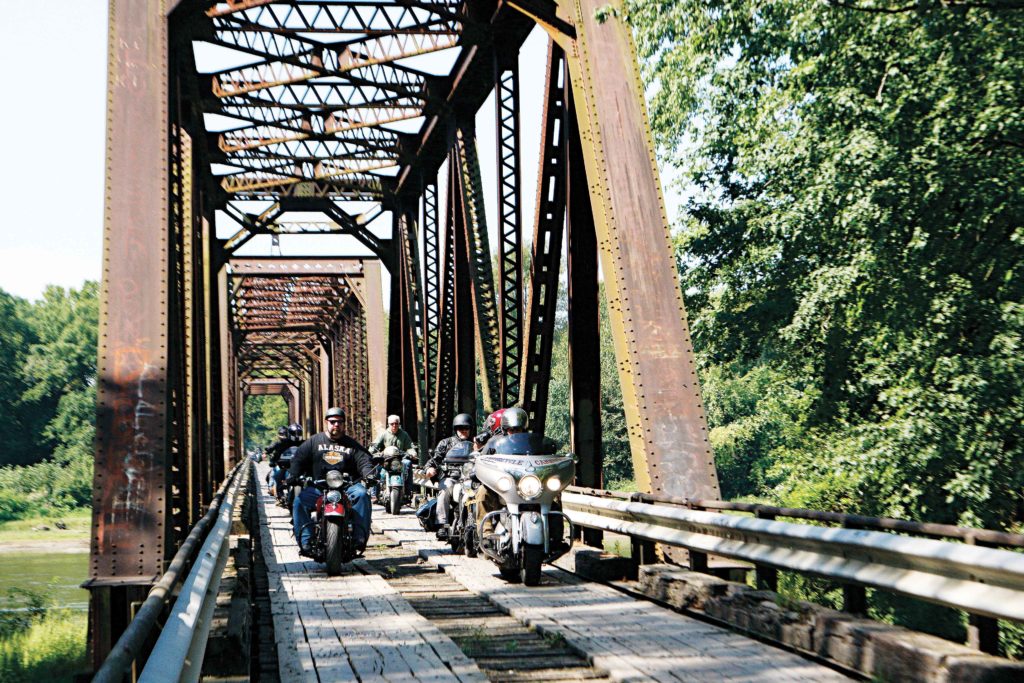
The Chase was a part rolling museum since it was open to all marques. Predictably, it was populated mostly with Harleys and Indians but was well-represented by lesser-known brands like a Zundapp, Nimbus and a Velocette. A rare BSA Sloper, some Triumphs and a Norton were also entered, and the public embraced all the machines equally. All the stops along the way were hosted by Harley-Davidson dealerships except one. During Stage 2, after a ride across Lake Michigan aboard the antique ferry S.S. Badger, the evening was spent at the Harley-Davidson Museum in Milwaukee, Wisconsin, where riders were invited to a lavish dinner and an opportunity to tour the museum. The gathered CCC antiques seemed to accent the Harley exhibit quite nicely.
Both promoter couples had sons with them, with young Jace Sims working with the merchandising team and Chris Salisbury riding every mile on a 1936 H-D, which cemented the family aspect of the run. There were also husband-wife teams, brothers, brothers-in-law and even a boyfriend-girlfriend duo, and by the time riders crossed the finish line everyone had made new forever friends. It’s just plain impossible to struggle across this great nation with a herd of like-minded motorcycle maniacs and not bond with your brethren, and this group proved that truth.
Rules strictly dictated who could assist a rider. Options included complete strangers or fellow Chase riders, but that was it. Even Chase staff was limited in what they could offer a rider for their broken bike. Advice was freely given, but staff was not allowed to wrench, repair or otherwise involve themselves in roadside mechanics. If a machine was not immediately fixable, Chase crews loaded it up and transported it to the daily finish, but after that it was up to the owner to make arrangements. Riders were generous with their support of each other, offering tools and even parts. Word circulated through the group quickly on what was needed and calls were made ahead to secure whatever a rider might require. It became a sort of scavenger hunt to track down the ingredients to get down the road, with everyone cheering one another on. And even though the winning booty included trophies, bragging rights and a $7500 cash payout, riders were collectively focused on just making it to Key West.

One young husband-and-wife team was an absolute joy to be around, and made an immediate impression on everyone they met. Cheerful and chatty, Jake and Ginger Martin scored perfect miles in their 1941 H-D sidecar until Stage 8, which happened to be Friday the 13th. Ginger had gushed at the starting line that Jake had promised that the bike would be hers after this run, so she was especially excited to see it performing so well as they worked their way along the route, but Friday proved to be a turning point. A large hole the size of a quarter burned through the old Knucklehead’s piston, sidelining the couple in Lakeland, Florida.

Ginger tearfully made the rounds during breakfast, sadly saying goodbyes as their new friends prepared for the day and motored on, leaving the pair behind with the broken bike. Later, in a last-ditch effort, they arrived at Warren Lane’s shop and dug through parts boxes. Lo and behold, Jake found what he needed and spent the rest of the night rebuilding the mighty Knuck. By Sunday morning, the jubilant Martins rode onto the pier at Mallory Square right beside the other Chasers.
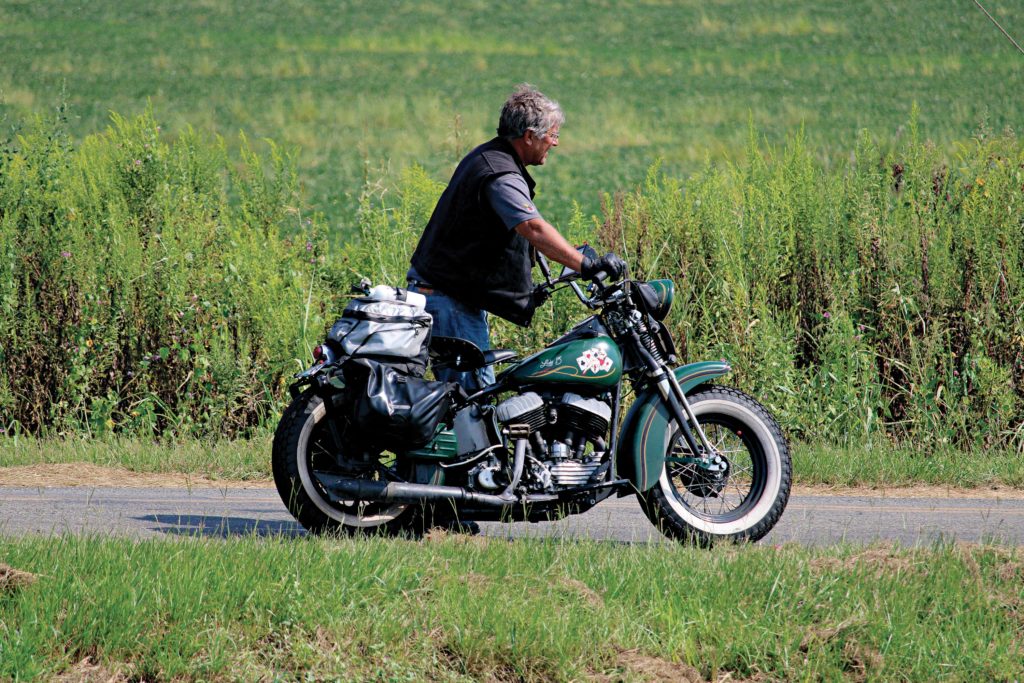
And on that bright and beautiful fall day, a total of 57 antique motorcycles completed a historical 2,368-mile pilgrimage from the Canadian border to the farthest point of Key West.
There was absolutely nothing ‘typical’ about this journey. It truly was an adventure of a lifetime.
Check out the interactive map of the journey below.
To view full screen, click here https://bit.ly/2OmHX7x
For more information, scores and details, check out www.themotorcyclechase.com.

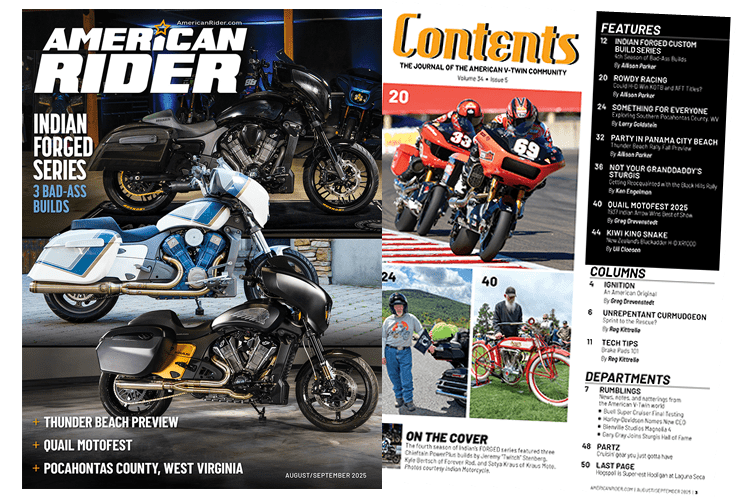
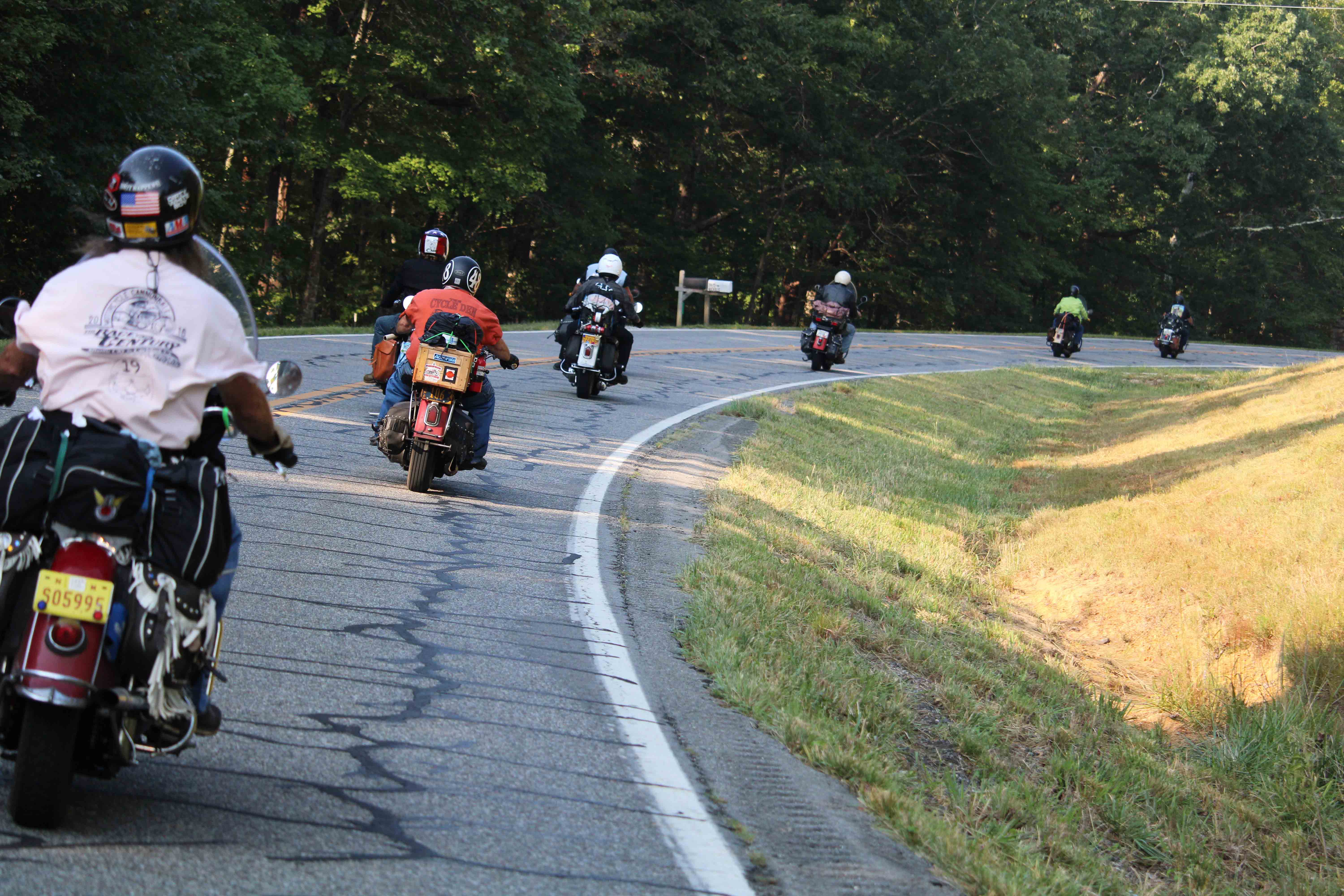
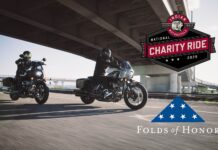


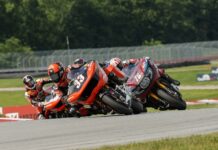











[…] Read Thunder Press’ coverage of the 2019 chase here. […]